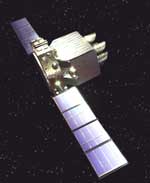
Image credit: ESA
The European Space Agency announced this week that it has canceled Eddington, a space-based observatory designed to search for extrasolar planets. They’re also going to be scaling back the BepiColombo mission to Mercury by removing the lander that was supposed to accompany the spacecraft. The agency blamed the cuts on budget overruns with other missions, such as Rosetta. One new mission was announced, however. The LISA Pathfinder will serve as a prototype to help search for gravity waves.
Today, at its 105th meeting, ESA’s Science Programme Committee (SPC) has made important decisions concerning the Cosmic Vision programme. Due to the current financial exigencies and an outlook with no budget increase or other relief, the SPC was forced to cancel the Eddington mission and rescope the BepiColombo mission.
Eddington had two aims, both remarkable and very pertinent to front-line astronomical interests. The first aim was to look for Earth-like planets outside our solar system – one of the key goals in the search to understand how life came to be, how we came to live where we do in the universe and whether there are other potential life supporting environments ‘out there’. At the same time it was going to follow on the path blazed by the ESA-NASA mission SOHO had taken with the Sun of using astroseismology to look ‘inside’ stars. In the longer term, the loss of this one mission will not stop us pursuing the grand quests for which it is a step.
The loss of the BepiColombo lander is also scientifically hard to take. ESA, in conjunction with the Japanese space agency, JAXA, will still put two orbiters around Mercury but the ?ground truth? provided by the lander is a big loss. However, to land on a planet so near the Sun is no small matter and was a bridge too far in present circumstances, and this chance for Europe to be first has probably been lost.
The origins of the problems were recognized at the ESA Council, held in June 2003. Several sudden demands on finance occurred in the spring, the most obvious and public being the unforeseen Ariane 5 grounding in January. A loan of 100 million Euro was temporarily granted, that must be paid back out of present resources by the end of 2006.
ESA’s SPC were therefore caught in a vice. Immediate mission starts had to be severely limited and the overall envelope of the programme kept down.
By making today’s decision, the SPC has brought down the scope of the Cosmic Vision programme to a level that necessarily reflects the financial conditions rather than the ambitions of the scientific community.
A long and painful discussion during the SPC meeting resulted in the conclusion that only one new mission can be started at this time, namely LISA Pathfinder. The mission is the technical precursor to the world?s first gravitational wave astronomical observatory, LISA. The LISA mission itself (to be made in cooperation with the United States) is scheduled for launch in 2012.
ESA’s Cosmic Vision, set to last until 2012, is a living programme. It has to be able to constantly adapt to to the available funding as well as respond to the expectations of the scientific community, to technological developments. Within these boundaries, the decisions made by the SPC try to maximize the outcome of Cosmic Vision across disciplines, keeping it at the same time challenging and affordable. Nonetheless, there are many European scientists with ambitions that exceed the programme?s ability to respond.
Original Source: ESA News Release
